In addition to wreaking havoc on the aviation industry through record-low passenger numbers, the coronavirus pandemic is also accelerating a period of rapid transition in the industry in terms of aircraft usage.
Big and beefy planes, like the Airbus A380 and the Boeing 747, were already on their way out and scheduled to be retired by many airlines in 2021 or 2022, in favour of smaller, leaner, and more fuel-efficient models like the Boeing 787 and Airbus A350.
But with airlines around the world grounding the majority or the entirety of their fleets at this time, many of these famous planes will face an early extinction, and it’s sad to say that a lot of the unique aviation experiences that one could unlock with Miles & Points may be consigned to the history books if you don’t take advantage of your last window of opportunity to try them out.
Moreover, with social distancing measures in place for the foreseeable future, even the experience onboard other aircraft won’t be the same for a little while.
In this article, let’s take a moment to eulogize the aviation experiences that may be much less accessible in the future thanks to the cataclysmic shift in the aviation industry over the past few months.
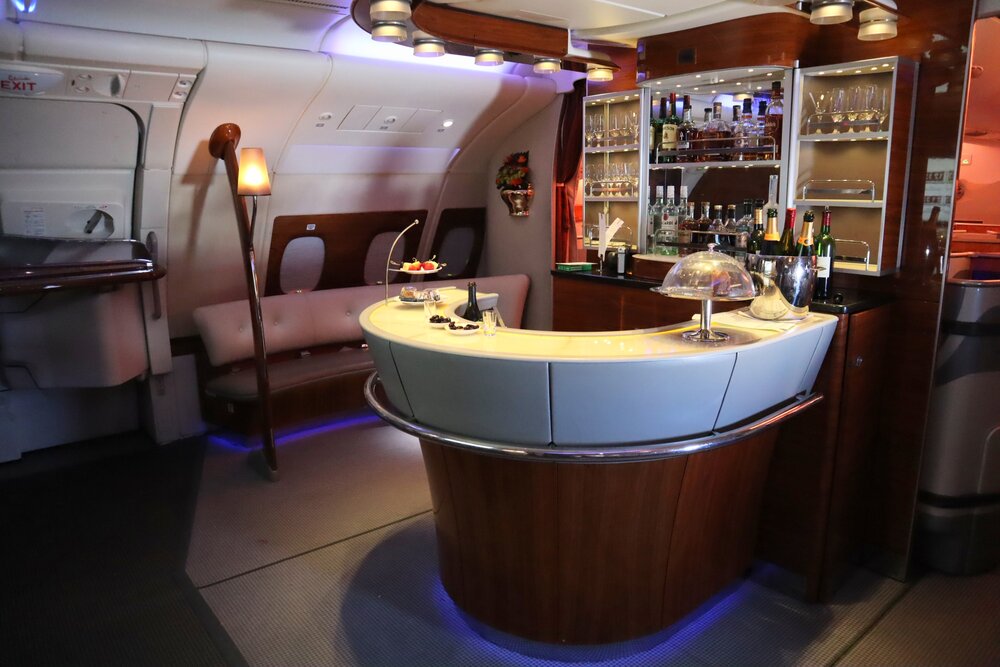
It’ll be a while before we get to enjoy this again.
1. Airbus A380 Upper Deck
One of the most famous aircraft to ever take to the skies, the Airbus A380’s lifespan is unfortunately dwindling day by day.
Despite being a widely-acclaimed marvel of engineering when it was introduced, the Airbus A380 simply proved too large for airlines to operate it successfully, as most airlines found that there were never enough routes between city pairs that justified the A380’s large passenger numbers of 600+ on a single flight.
It makes perfect sense for airlines to bring forth the timeline of their A380 retirements to the present day. If they were too big for the airline’s needs during normal times, why would they be necessary over the next few years, when demand global travel is slowly recovering from record-low levels?
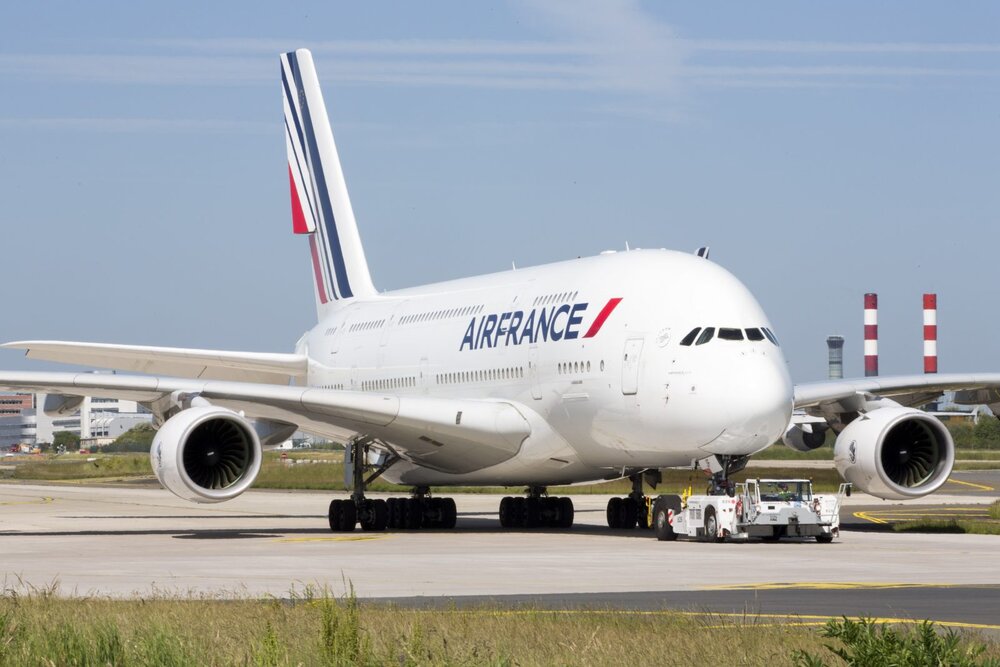
Air France will be phasing out their entire fleet of Airbus A380s.
Air France has just announced they it’s retiring all their A380s. Lufthansa is retiring six of their 14. Rumours are swirling that Emirates, the world’s largest operator of the A380, may be retiring a significant chunk of their fleet. And airlines like Qatar Airways and Singapore Airlines have announced that their Airbus A380s are indefinitely grounded and may never return; for the former, that would spell the end of their First Class product entirely.
That brings me to another sad reality: the remaining opportunities for flying the Airbus A380 and some of its iconic premium products may be few and far between. I consider myself fortunate to have tried out a few for myself, from Emirates’s blinged out A380 First Class to the Etihad A380 Apartments in early March, shortly before everything changed.
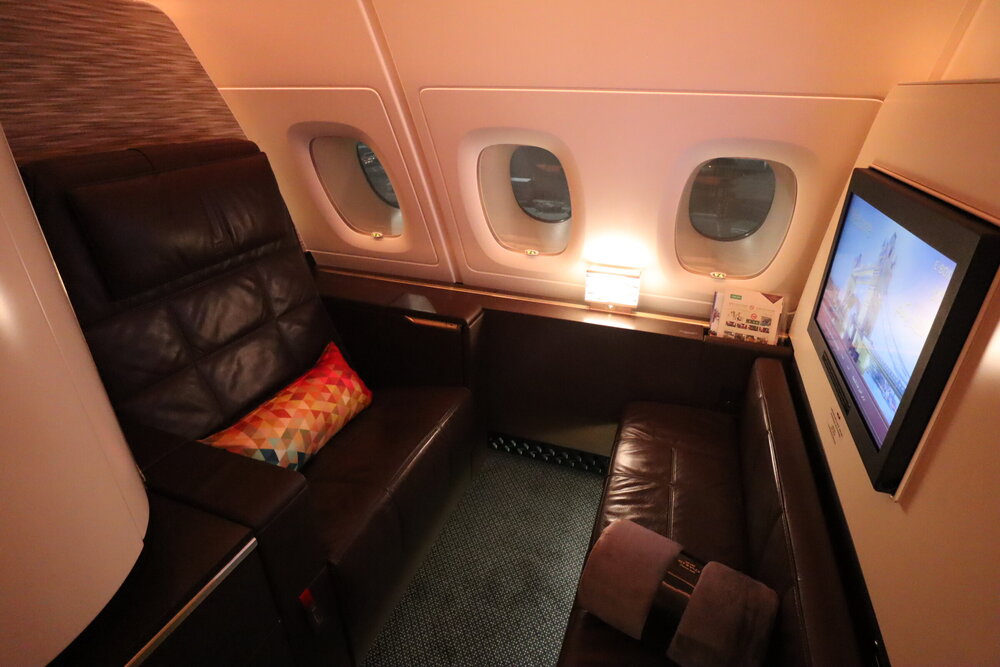
I’m thankful to have flown the Etihad A380 Apartments right at the 11th hour.
However, even business, premium economy, and economy class on the big bird were quite special in their own right, as there was an abundance of personal space for each passenger, especially by the windows thanks to the curvature of the aircraft.
Most airlines choose to put First Class and business class on the upper deck, but there’s often a few rows of economy class seats squeezed into the back of the upper deck as well. I remember when I flew on an Asiana A380 many years ago: an upper-deck seat was very much a hot commodity among my fellow economy class passengers.
If you’d like to experience the A380 before it retires, a trip with Lufthansa or Emirates in late 2020 or early 2021 should very much still be doable, but you’ll want to firm up those plans sooner rather than later.
And even then, the onboard experience sadly may not quite be the same as it was before (as we’ll discuss below).
2. Boeing 747 Upper Deck
Another cult hero in aviation, the Boeing 747 is known for its upper deck as well, this time a much more intimate setup than its distant Airbus cousin. Unlike the A380, the 747’s upper deck is limited to the “bubble” at the front of the plane, giving it its distinctive crane-like shape and the nickname “Queen of the Skies”.
While the Airbus A380 can be boarded via the doors on either deck, the 747 boards everyone via the ground floor, and then upper deck passengers are invited to go up a narrow set of stairs to access their lofty positions. And I must say, while my experience onboard Lufthansa 747 business class a few years ago wasn’t the best in terms of the flight itself, there was something very special about going up those stairs.
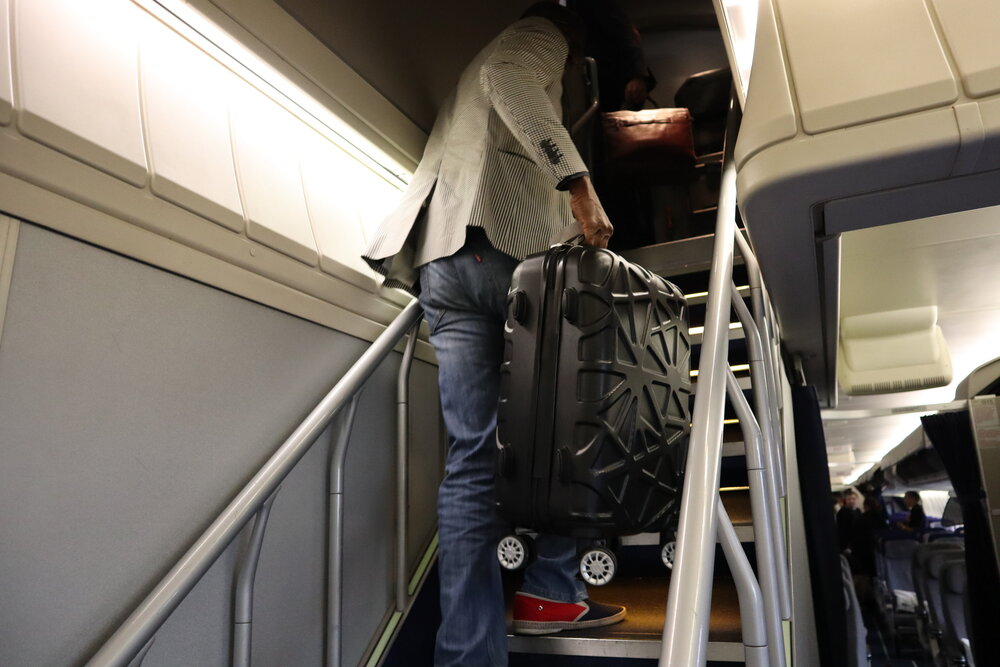
Stairway to the upper deck of the 747
Unfortunately, the Boeing 747 is also notoriously fuel-inefficient, which is why it was already nearing its end before the pandemic struck, with only a handful of airlines around the world still operating it.
One of its major operators, Lufthansa, has now announced that they will be retiring five of their 13 birds. British Airways plans to retire all of their 28 aircraft by 2024, although the pandemic may accelerate that timeframe.
Air China and Korean Air, for their part, have announced that they intend to continue to use the 747 after travel resumes, whereas KLM’s iconic 747s have already sung their swan song, coming out of retirement in April to ferry essential medical supplies from China to the Netherlands.
If you’d like to experience the upper-deck “bubble” for yourself, you likely still have another few years to do so, whether it’s redeeming Aeroplan miles for Air China business class from one of their US gateways, snagging a seat on Lufthansa 747 business class through an award schedule change (to avoid fuel surcharges) or a cheap cash fare, or splurging the Avios for a ride with British Airways.
No matter which airline you’re flying with, make sure to select your upper-deck seats as soon as you’ve made your reservation: there are usually only 10–20 business class seats up here, and they get snatched up quickly!
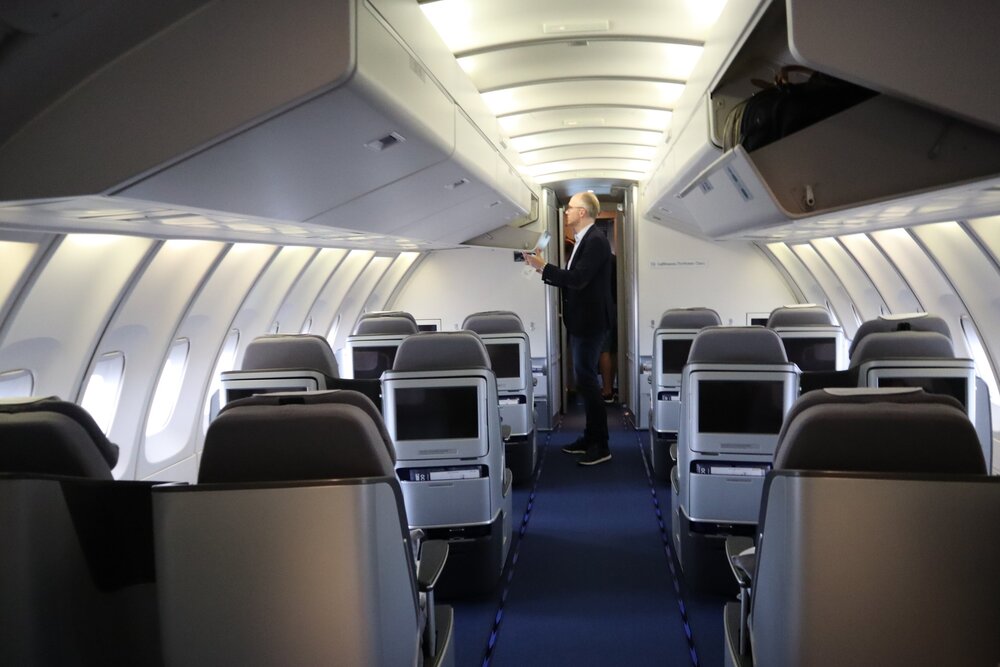
Business class in the upper deck “bubble” of the 747
3. Boeing 747 Nose Cone
Also on the Boeing 747 is another novel aviation experience: sitting in the very nose of the plane while indulging in an international First Class product.
Since the 747’s cockpit is located on the upper deck, its lower deck is free to be occupied by passengers, and airlines typically leave this space for their most valued First Class guests. Air China, Lufthansa, Korean Air, British Airways, and Thai Airways have all chosen this configuration for their 747s, bestowing upon passengers seated in Row 1 a slightly forward-facing view from the windows thanks to the curvature of the plane.
I was delighted to fly Korean Air 747 First Class earlier this year, selecting Seat 1A as soon as I had made the reservation, and the privacy and exclusivity of sitting at the very pointy end of the plane was something I’ll never forget.
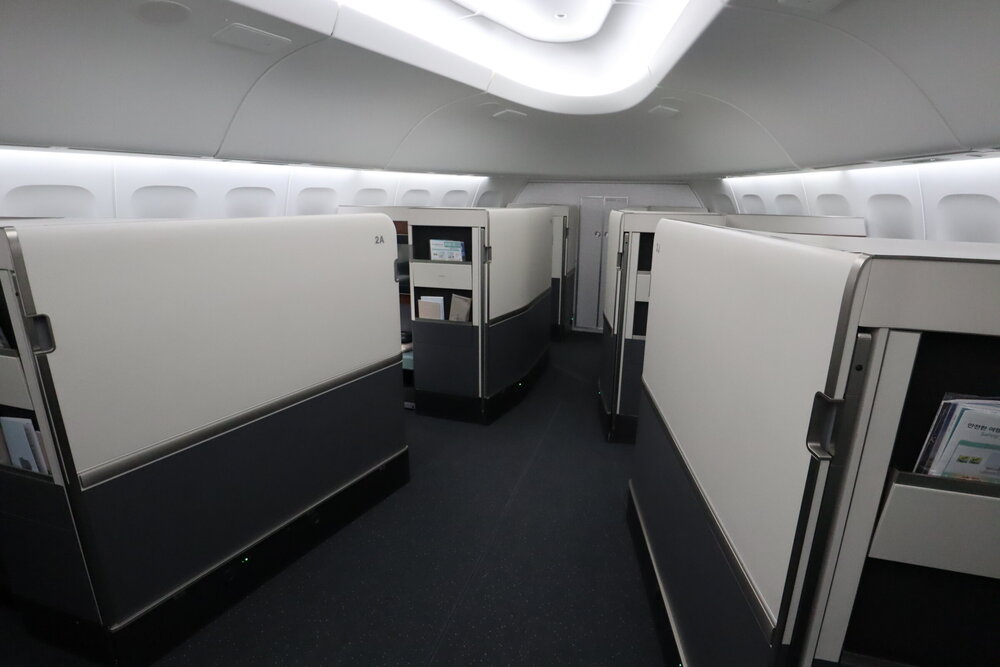
Flying in the nose of the 747 was one of my major aviation bucket list items.
Air China, Lufthansa, and Thai Airways will be the easiest 747 First Class products to hunt down using your Aeroplan miles, assuming that these airlines do indeed resume 747 service.
British Airways 747 First Class seems like a worthy component of an aspirational Avios multi-carrier award, while Korean Air 747 First Class will be decidedly tougher to book, now that Chase is no longer a partner of Korean Air SKYPASS.
No matter which carrier you choose, the Queen of the Skies is looking certain to abdicate her throne sometime over this coming decade, so the next few years will be your time to act if you’d like to experience this unique aircraft for yourself.
4. Flying As We Know It, Really
Even among the aircraft with greater longevity, like the Boeing 777, Boeing 787, or Airbus A350, I think we’re all coming to terms with the fact that nothing will be the same for a while once global travel slowly resumes.
With social distancing measures in place, airlines around the world have announced that they will reduce service in premium cabins, block off middle seats in economy class, encourage and/or require passengers to wear masks and in general divert resources away from unnecessary luxuries of flying and focus on the essentials of limiting contact among crew and passengers.
On the topic of Airbus A380s, Emirates have understandably closed their shower in the sky and their onboard lounge for the foreseeable future. Meanwhile, Qatar Airways have announced that they will be scaling back many of the personalized touches that their business class soft product is well-known for, including replacing dinner plates with trays and offering wrapped cutlery instead of hand-delivered individual utensils.

Exquisite meal presentations like these will be on hold for a little while.
All signs point to a future of aspirational travel that will be decidedly less aspirational than it was before, at least until the world arrives at a vaccine or similar far-reaching solution to COVID-19. Indeed, when I wrote about the killer Qatar Airways rebooking deal, reader Steve asked the following very astute question:
Hey Ricky, aren’t you concerned you won’t be getting the complete experience on this type of flight/seat you would in normal times? That’s a lot of money to spend to potentially having to wearing a mask an entire flight(s), and a dining experience which might be very subdued and perhaps even sanitized?
It’s uncertain if we’ll ever have a return to the “normal times”, and that’s something that we as ardent frequent flyers will need to make our peace with.
When it’s possible to travel safely and responsibly again, people will still need to travel, and a business class seat will continue to provide the lie-flat comforts that an economy class seat does not, only without many of the bells and whistles that we’ve grown accustomed to in recent times.
Among those of us who collect Miles & Points for the aspirational travel experiences, we’ll have to each decide for ourselves the best way forward.
Do we continue to earn and burn for an experience that’s still highly rewarding, but perhaps subdued compared to before (i.e., we may have to briefly remove our masks before sipping our preferred choice among four fine wines, rather than the usual six)? Or do we save our travel plans for the more distant future, when our miles might once again unlock the “complete experience” that Steve refers to?
As you might expect, I myself am leaning more in the former direction, while harbouring as much hope as anyone that the “new normal” will be as short-lived as possible.
Conclusion
While it’s of course a minor trifle in the grand scheme of things, I know that frequent flyers and aviation geeks around the world are hurting in their own ways these days, as the future of commercial aviation is tinged with a great deal of uncertainty.
Iconic aircraft like the Airbus A380 and Boeing 747 are facing an early extinction, along with the treasured premium experiences in their most exclusive spaces, while the jets that do take to the skies will offer a reduced onboard experience for the foreseeable future – one that may differ permanently from what aspirational travel was like before the second week of March 2020.

















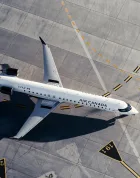
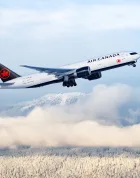

I started collecting miles 1 year ago exactly because of your website ! I am dual citizen in Europe with a PR card in Canada and me and my girlfriend are flying biz class for the first time now june 22nd on lufthansa 747 upper deck. The staying in Europe until october where the contuiing flight is turkish airlines to Bali. Then Eva Air back to Toronto in december. I am excited to fly the legendary 747 but also…should i say worried…that the dining and wine epxperience is not gonna be there at all. I guess we will see. I am ok with the lufthansa flight being nothing speciall but really hope restrictions have eased a bit in october-december otherwise i guess need to change to economy. Lets se if Bali is open even then.
Anyway thanks for this blog and getting me going to collect miles and giving me the opportunity to fly like this. Kkeep up the good work! Hopefully see you in TO one time!
Sounds good! I think you’ll really enjoy the experience of flying the upper deck on the 747. The food presentation may be a little reduced, but I don’t recall the meal selection being too outstanding anyway. And they should still have ample wine to last you through the flight! 🙂
ANOTHER GOOD Write-up. As a frequent traveler myself (family working for the UN); and 32 countries under our belt in recent years; I have to say that there is no such thing as getting back to ‘normal’ sorry. This Covid19 Pandemic is a major pivotal life-changing event just like a World War or worse economically. If anything you can say you’re curious and perhaps excited about the new ‘normal’ world coming soon and the potential opportunities that will emerge.